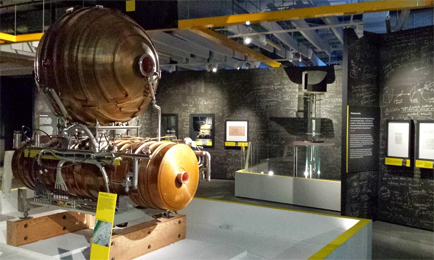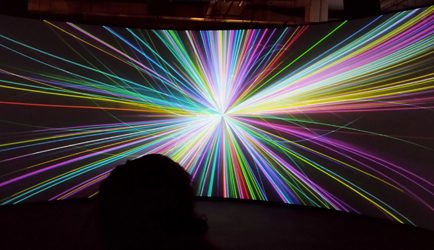Articles
Centre of attention: One of the LHC’s detectors
In 1897 a single physicist discovered the electron, and in 1932 it took two men to split the atom for the very first time. But decades later it has taken thousands of scientists working together to observe the Higgs boson particle.
Over the past few years the hunt for the elusive particle has stimulated a worldwide interest in science, the like of which has not been seen since the moon landings of the 1960s.
Scientists say the discovery of the particle in 2012 has brought us one step closer to understanding the universe. What’s perhaps just as interesting is that the discovery has united people of all nationalities, ages and backgrounds in their desire to find out more about the biggest scientific experiment on the planet – the Large Hadron Collider (LHC). In response to this attention, the Science Museum in London and Cern have created an exhibition that aims to bring the drama and excitement of cutting-edge science straight to the hungry public.

The Collider exhibition beams visitors to Cern’s underground laboratory in Geneva, where they are ushered inside and invited to participate in an important ‘internal meeting’. A clever blend of video and theatre creates a wonderful sense of excitement as virtual scientists and engineers describe the particle experiments and disclose some impressive facts and figures. A cameo appearance by the celebrated professor Brian Cox ensures that everyone is paying full attention.
Further on, there’s a replica Cern control room to explore. This houses controls for the accelerator, its services and the technical infrastructure.
Visitors can follow the journey of particle beams as they are injected into the accelerator chain, ramped up to speed and steered around the 27km LHC tunnel.
By walking around the displays, peering into pretend offices and hearing personal stories, it becomes easier to imagine what it feels like to operate the giant particle collider, where scientists and engineers work at the extremes of temperature, vacuum and energy to recreate conditions not seen since the Big Bang 13.7 billion years ago.
Artefacts from the LHC can be seen on display, including part of one of the 15m magnets that steers the particle beam, and elements from each of the collider’s four giant detectors.

The highlight of the exhibition is a large wrap-around projection screen which takes in both extremes of the scale of the LHC, from a giant experiment cavern to the very heart of a particle collision. Not to be missed on the way out is J J Thomson’s apparatus which led to the discovery of the electron, and the accelerator used by Cockcroft and Walton to split the atom.